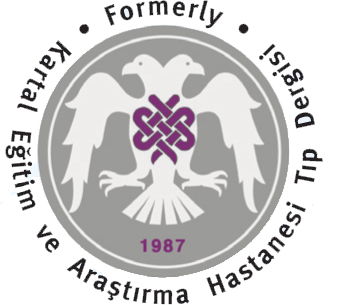Are There Any Parameters to Predict the Risk of Screw Breakage Following the Transarticular Screw Fixation in Lisfranc Injuries? A Retrospective Study on 61 Patients
Selim Ergün, Mehmet Süleyman Abul, Engin EcevizDepartment of Orthopaedics and Traumatology, Kartal Dr. Lütfi Kırdar City Hospital, İstanbul, TurkeyINTRODUCTION: The Lisfranc complex is an osseo-ligamentous structure consisting of multiple tarsal and metatarsal bones, joints, and ligaments. The transarticular screw method is the most commonly preferred fixation technique in patients with Lisfranc injury. However, screw breakage complications can be seen with a considerable frequency. Although there are studies in the literature that associate the risk of screw breakage with the diameter or structure of the screw used, there is still no consensus. The aim of this study is to predict the risk of screw breakage by examining many parameters.
METHODS: We retrospectively evaluated 61 patients with lisfranc injuries who underwent transarticular fixation with screws of different diameters and properties. We found screw breakage complications in 9 (14.7%) of the patients. Some demographic and radiological parameters were examined to predict screw breakage in these patients. Age, gender, weight, diameter and structure of the screw used, presence of accompanying cuneiform, cuboid or metatarsal base fracture, how many tarsometatarsal joints were involved and whether anatomical reduction was achieved. In addition, the development of post-traumatic arthrosis during the 2-year follow-up, and the American Orthopedic Foot and Ankle Association (AOFAS) -Middle Foot Score and Visual Analogue Scale (VAS) scores were also compared in clinical evaluations.
RESULTS: We could not find any radiological or demographic parameter that could predict the screw breakage complication in the results. We found only that post-traumatic arthritis was significantly more common in patients with screw breakages. We also found that there was no significant difference in AOFAS-midfoot and VAS scores in patients with or without screw breakage complications.
DISCUSSION AND CONCLUSION: In the transarticular screw fixation of Lisfranc injury; screws diameter, cannulated or solid structure, the presence of accompanying tarsal or metatarsal injuries and the reduction quality of the injured anatomic structures do not pose any risk factors for the screw breakage complication.
Transartiküler Vidalarla Tespit Edilmiş Lisfrank Yaralanmalı Hastalarda Vida Kırılma Riskini Öngörebilecek Parametreler Var Mı? 61 Hasta Üzerinde Geriye Dönük Çalışma
Selim Ergün, Mehmet Süleyman Abul, Engin EcevizKartal Dr. Lütfi Kırdar Şehir Hastanesi, Ortopedi ve Travmatoloji KliniğiGİRİŞ ve AMAÇ: Lisfrank kompleksi çoklu tarsal metatarsal kemik, eklem ve bağlardan oluşan osseo-ligamentöz bir yapıdır. Lisfrank yaralanması olan
hastalarda en sık tercih edilen tespit yöntemi transartiküler vida yöntemidir. Ancak bu yöntem ile tespit edilen hastalarda azımsanmayacak sıklıkta vida kırılması komplikasyonu görülmektedir. Literatürde vida kırılma riskini kullanılan vidanın çapı ya da yapısı ile ilişkilendiren çalışmalar bulunmasına rağmen yine de tam bir fikir birliği oluşmamıştır. Bu çalışmanın amacı, vida kırılma riskini çok sayıda parametreyi inceleyerek önceden öngörebilmeyi sağlamaktır.
YÖNTEM ve GEREÇLER: Bu çalışmada farklı çapta ve özellikte vidalar ile transartiküler tespit yapılmış 61 lisfrank yaralanmalı hastayı geriye dönük değerlendirdik. Hastaların dokuzunda (%14.7) vida kırılma komplikasyonunu saptadık. Bu hastalarda vida kırılmasını öngörebilmek için bazı demografik ve radyolojik parametreler incelendi. Yaş, cinsiyet, ağırlık, kullanılan vidanın çapı ve yapısı, eşlik eden küneiform, kuboid ya da metatars bazisi kırığının bulunması, yaralanmanın kaç tarsometatarsal eklemi ilgilendirdiği ve redüksiyonun anatomik olarak sağlanıp sağlanamamasıydı. Ayrıca iki yıllık takiplerde post-travmatik artrozun gelişip gelişmediği, klinik değerlendirmelerde Amerikan Ortopedik Ayak ve Ayak Bileği Derneği (AOFAS) -Orta Ayak Skoru ile Görsel Analog Skala (VAS) skorları da karşılaştırıldı.
BULGULAR: Sonuç olarak, küçük çaplı ya da kanüllü vidalarda daha fazla vida kırılması komplikasyonunu beklerken, vida kırılmasını öngörebilecek
anlamlı bir parametreyi bulamadık. Vida kırılması olan hastalarda post-travmatik artrozu daha sık tespit ettik. Ayrıca AOFAS-orta ayak
ve VAS skorlarında, vida kırılması yaşamayan hastalara kıyasla anlamlı bir fark olmadığını da gördük.
TARTIŞMA ve SONUÇ: Lisfrank yaralanmasının transartiküler vida fiksasyonunda; vida çapı, vidanın kanüllü veya solid yapısı, eşlik eden tarsal veya metatarsal
yaralanmaların varlığı ve yaralanan anatomik yapıların redüksiyon kalitesi, vida kırılması komplikasyonu için herhangi bir risk faktörü oluşturmamaktadır.
Manuscript Language: English



















